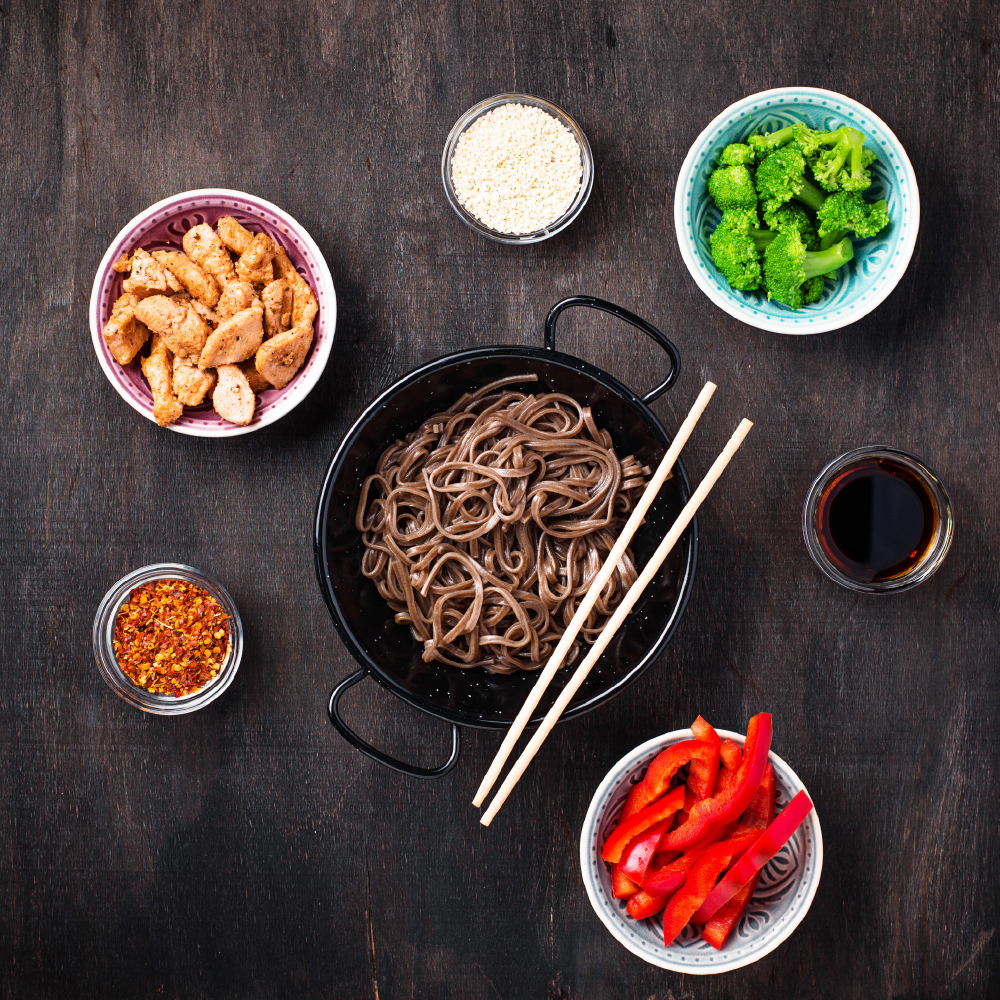
Asian cuisine is as vast and varied as the continent, encompassing a rich tapestry of flavors, ingredients, and culinary traditions. From the fiery curries of South Asia to the refined sushi of Japan, each region offers its unique gastronomic delights. This article takes you on a culinary journey through Asia, exploring the diverse foodscapes that make up this vibrant part of the culinary world.
The Foundations of Asian Cooking
Asian cuisine skillfully balances five key taste elements: sweet, sour, salty, bitter, and umami, creating complex flavors. Chefs meticulously blend a variety of regional herbs, spices, and seasonings to achieve this harmony. For instance, the use of fish sauce in Southeast Asia, soy sauce in China and Japan, and tamarind in India exemplifies the distinctive approaches to achieving depth of flavor in Asian cooking.
Regional Culinary Highlights
South Asia: A Symphony of Spices
Asian cuisine achieves complex flavors by delicately balancing five key taste elements: sweet, sour, salty, bitter, and umami. Chefs meticulously blend these elements using a variety of unique herbs, spices, and seasonings from each region. The traditional Indian thali, a platter featuring various dishes, offers a perfect snapshot of this region’s culinary diversity.
East Asia: Artful Balance and Precision
East Asian food, encompassing Chinese, Japanese, and Korean cuisines, emphasizes balance and aesthetic presentation. Chinese cuisine offers a variety from the fiery Szechuan to the subtle Cantonese, while Japanese cuisine elevates simplicity and seasonality, with sushi and sashimi prime examples. Korean food brings bold flavors with dishes like kimchi and barbecue, highlighting a mastery of fermentation and grilling techniques.
Southeast Asia: Fresh and Fragrant
Southeast Asian cuisines, including Thai, Vietnamese, and Indonesian, are noted for their incredible use of fresh herbs and spices. Thai food, for example, is a delightful play of sweet, sour, salty, and spicy, with dishes like pad Thai and green curry. Vietnamese cuisine is celebrated for its fresh spring rolls and pho, a noodle soup that is both light and flavorful, emphasizing the freshness of its ingredients.
Street Food: The Heartbeat of Asian Cuisine
Street food is an integral part of Asian food culture, offering an authentic taste of everyday life. In places like Bangkok, Taipei, and Mumbai, street food is not just about convenience but also tradition and community. These bustling markets showcase many dishes often prepared with techniques passed down through generations, serving as both a culinary and social experience for locals and tourists alike.
Fusion and Innovation
In recent decades, Asian cuisine has seen a wave of innovation, with chefs in Asia and globally deconstructing traditional dishes to create new culinary expressions. Fusion dishes, such as Korean tacos or Japanese-inspired ramen burgers, illustrate how Asian flavors can successfully blend with other culinary traditions, creating exciting new tastes and textures.
Challenges and Preservation
Despite its global popularity, Asian cuisine faces challenges such as diluting traditional flavors and techniques due to commercialization and the need for speed in modern life. Preserving authentic methods and recipes is crucial for maintaining the culinary integrity of the region’s food. Initiatives by chefs and food enthusiasts worldwide to document and educate on traditional Asian cooking methods are vital in keeping these culinary traditions alive.
Health Benefits of Asian Diets
The traditional Asian diet is often cited for its health benefits, mainly because it emphasizes vegetables, grains, and lean proteins. The use of medicinal herbs and spices, as well as cooking techniques like steaming and fermenting, contribute to a diet that is not only nutritious but also beneficial for long-term health.
Asian cuisine vividly illustrates the continent’s vast cultural diversity and history. It offers endless flavors and aromas that invite exploration and appreciation. As it continues to evolve and adapt to new influences and technologies, the essence of Asian food remains rooted in its ability to balance the ancient with the modern, the simple with the complex, and tradition with innovation. This culinary odyssey not only satiates the palate and the soul but makes Asian cuisine a true feast for the senses.